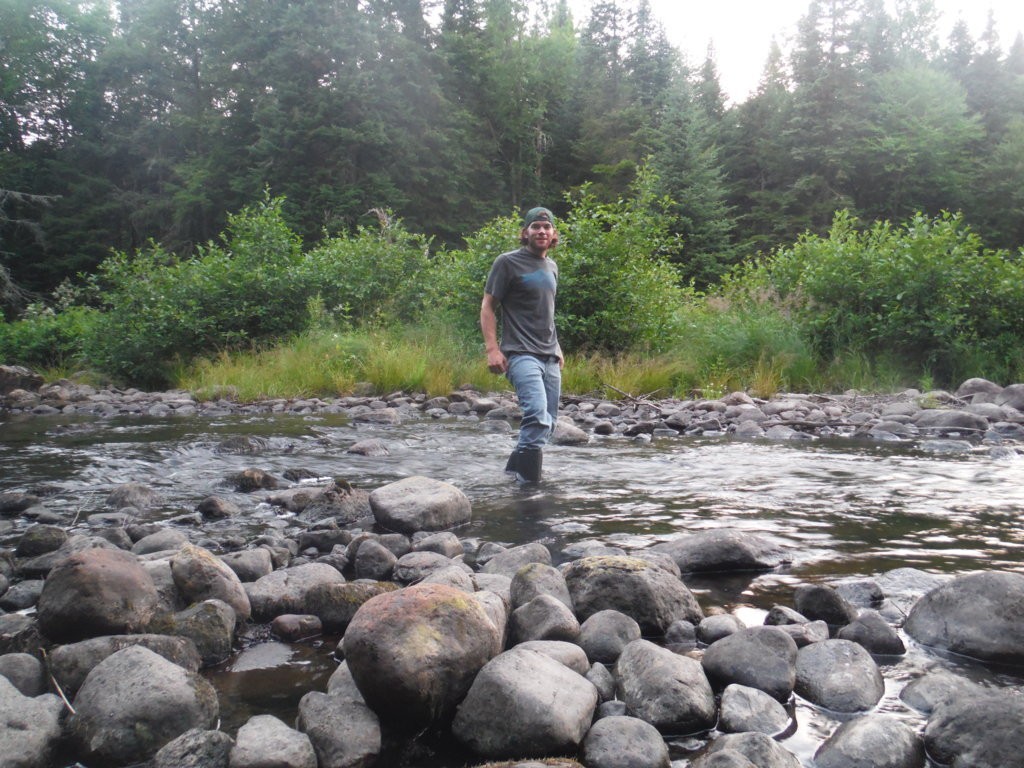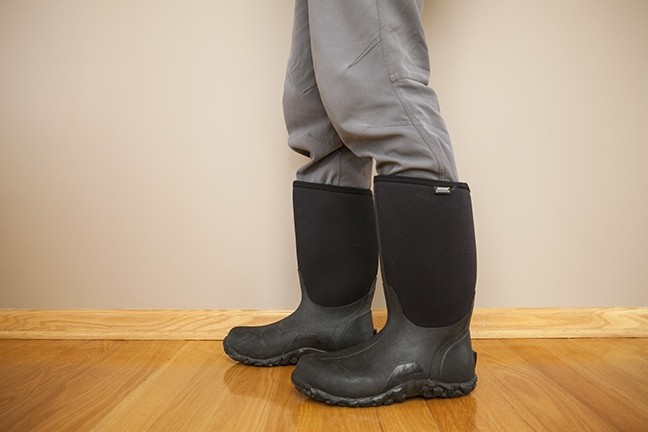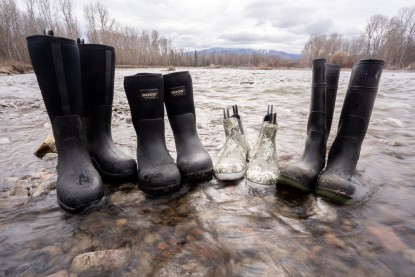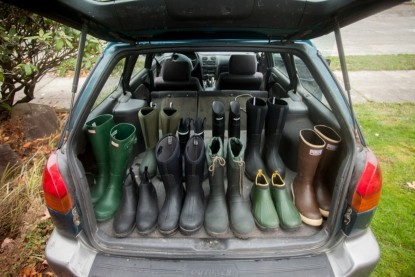Bogs Classic High Review
Our Verdict
Our Analysis and Test Results
The Bogs Classic High is a great choice if you find yourself needing a rain boot that's comfortable, warm, and has good traction. It performed almost as well as the Editors' Choice winner Kamik Icebreaker in our tests, but costs nearly double the price at $120.
Performance Comparison
Water Resistance
The Classic has a shaft that measures 14 inches from the bottom of the sole to the top of the shaft. Unless you plan on trying to ford a raging stream, this product is tall enough to keep your feet dry through mud, wet fields, or when you're walking through some deep puddles downtown. With a circumference of 17.5 inches, the gap between the shin and shaft is large enough to let some rain in without a mechanism to cinch it down. And when the interior of the boot gets soaked, it takes a day or two for the Neo-Tech to fully dry out.
Comfort
The Classic High is one of the more comfortable rain boots we tested. It has an Aegis antimicrobial odor protection insole, which provides some cushion and reduces odor-causing microbes. This model's insole is one of the thickest, along with the Bogs Ultra Mid Rain Boot which has the exact same insole. The lining inside the Classic fit very snugly all around our testers' feet; some reviewers found this comfortable, while others found it a bit too tight for their liking. Although the shaft did knock against our shins as we walked, it was more comfortable than other models, like The Original Muck Boot Company Arctic Sport - Men's. If you want the most comfortable boot, and don't have a need for the tall shaft, check out the LaCrosse Hampton, which has the shortest shaft of all.
Traction
The tread of the Classic has alternating round lugs and long bands running laterally across the bottom of the sole. While we tested the boot out by exploring a nearby riverbed, we also found that the Classic performs well on loose terrain thanks to the variety of lugs on the tread. The grooves are deep enough that the sole really digs into the earth, allowing our testers to fully push off without fear of our feet sliding out from under us. The tread proved to work equally well on wet pavement. If you're looking for a good middle ground between aggressive treads and smooth treads, the Classic is a great choice.
Warmth
This rain boot comes fully loaded with 7mm four-way stretch Neo-Tech insulation; Bogs designed this product to provide warmth for temperatures as low as -40 degrees Fahrenheit. Unfortunately, none of our testers live near such low temperatures to truly test the claim. In our ice water test, they survived the five minute test, and could have lasted longer. Our reviewer for the test did note that the ankles, not the toes, began to feel the chill creeping in first. This model isn't quite as warm as the Icebreaker or Arctic Sport boot.
During our late spring and early summer testing period, we found this model to be much too hot, but we think it's a great ally in colder temperatures. The liner does wick away moisture well enough that it takes some time before our feet begin to feel soggy and wet from our own perspiration.
Style
We love how well the neoprene upper keeps our feet warm, but we think it is a bit of an eye sore. This model looks a little cumbersome and lacks subtlety that would allow you to walk around downtown without getting cockeyed stares. If you want a stylish boot, we suggest taking a look at like the Hunter, which has a mid-height shaft like the Classic High, but offer much less warmth and comfort.
Ease of Use
Weighing in at 4 pounds and 15 ounces, the Classic was the heaviest boot in our mix, which was definitely noticeable after wearing them around for a significant amount of time. For a long day of walking and working wet and cold conditions, we prefered the lighter Kamik Icebreaker. We also found the Classic to be easy to get on but a little frustrating to get off, although it does feature rubber treads on the back to assist in peeling them off with your feet.
Fit
Our size 11 feet were too big for the size 11 model we ordered. We sent them back in and requested a size 12. Once we found the right size for our feet, the Bogs were one of the best fitting boots we tested. The booty is a snug fit all around our foot, without causing any hot spots. Our feet hardly slide around inside the bootie at all, unlike the Chore Mid or Arctic Sport.
Best Applications
This product has such great insulation that it's ideal for use in the temperatures lower than 50 or 60 degrees. The tread is also versatile enough that it can be used for off-road terrain, as well as hard, slick surfaces around town. We liked this model best for wet weather on cool to cold days while doing chores around the yard, farm, and woods.
Value
At $120, the Classic falls into the middle of the price range of all the pieces we tested. We think that this is a good price for this product, especially considering it has such a great and versatile tread, great insulation, and fit. It's hard to be disappointed with this model. However, if $120 looks like it's going to break your bank, you might want to check out the similar Kamik Icebreaker, which is significantly less and won our Editors' Choice award.
Conclusion
The Bogs Classic High offers great insulation to keep your feet warm and cozy in cold temperatures. It has a tall enough shaft to keep your feet dry from rain, puddles, mud, or whatever you may find yourself standing in. It's also noticeably comfortable thanks to the plush and thick Neo-Tech insulation, and the versatile tread will allow you to go from soft and loose terrain to the hard, slick surfaces you'd find around town. A former Editors' Choice winner, this pair of boots continues to impress us.













